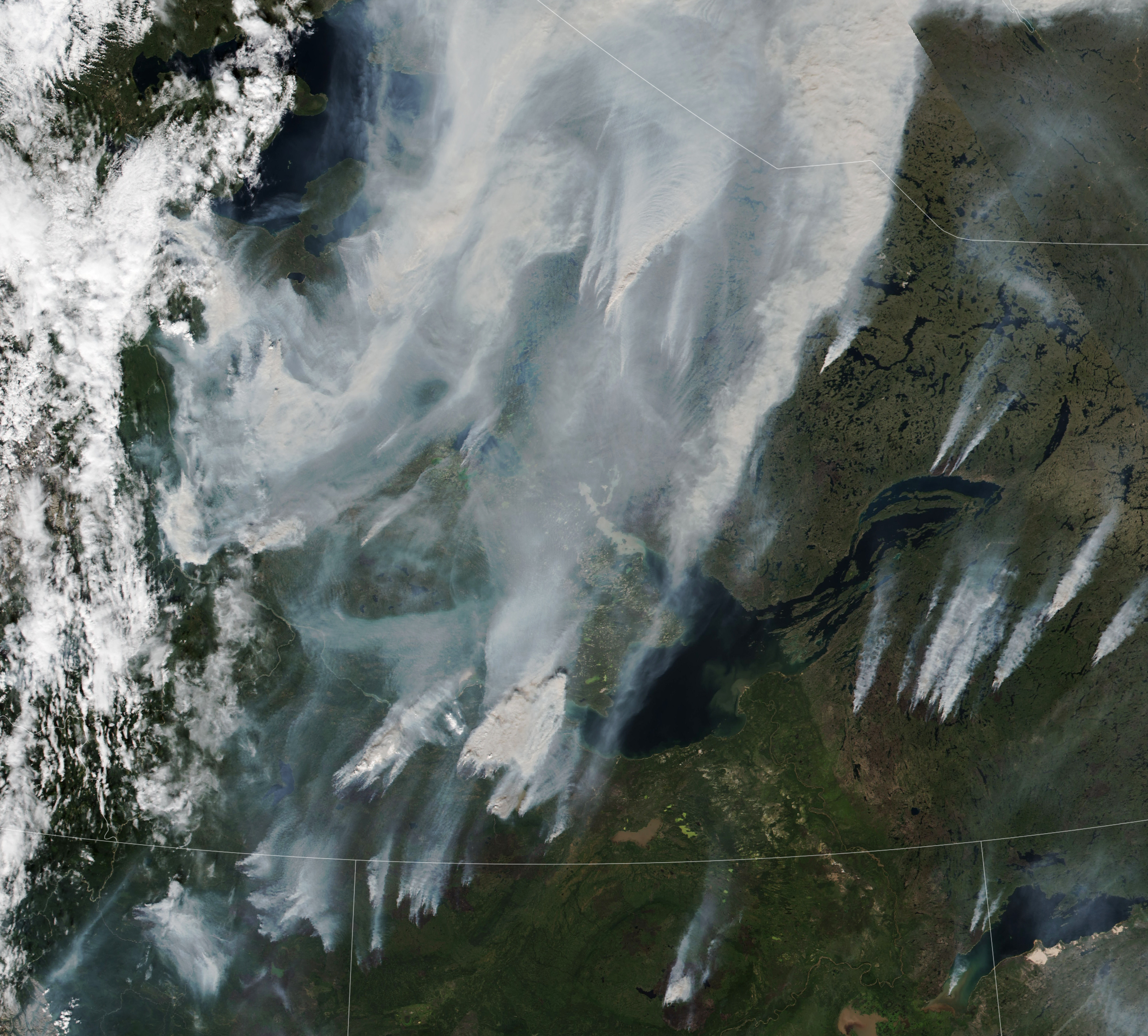The boreal forests of northern Canada have evolved to burn. These forests are dominated by black spruce, a type of evergreen that is not just tolerant of fire but dependent on it. Black spruce has waxy, resinous needles adapted to ignite during lightning storms and burn vigorously. The forests thrive if they burn every century or so because fires open the canopy up to light, stimulate new growth, and help maintain biodiversity. Fires also melt away the waxy coating on cones of black spruces allowing them to deposit seeds uniquely designed to thrive in charred, acidic soils. But Canada’s black spruce boreal forests have been burning more frequently in recent decades, putting even these fire-loving forests under strain.
The VIIRS (Visible Infrared Imaging Radiometer Suite) on the NOAA-20 satellite captured this image of smoke streaming throughout the region on August 11, 2024, the sensor detected nearly 100 active fires burning in the Northwest Territories, according to data posted by the territory’s government. The Canadian government, including the Northwest Territories, uses hotspot data from the Fire Information for Resource Management System (FIRMS), a fire monitoring system developed by NASA, to help detect and track wildfires.

For full story, check here!